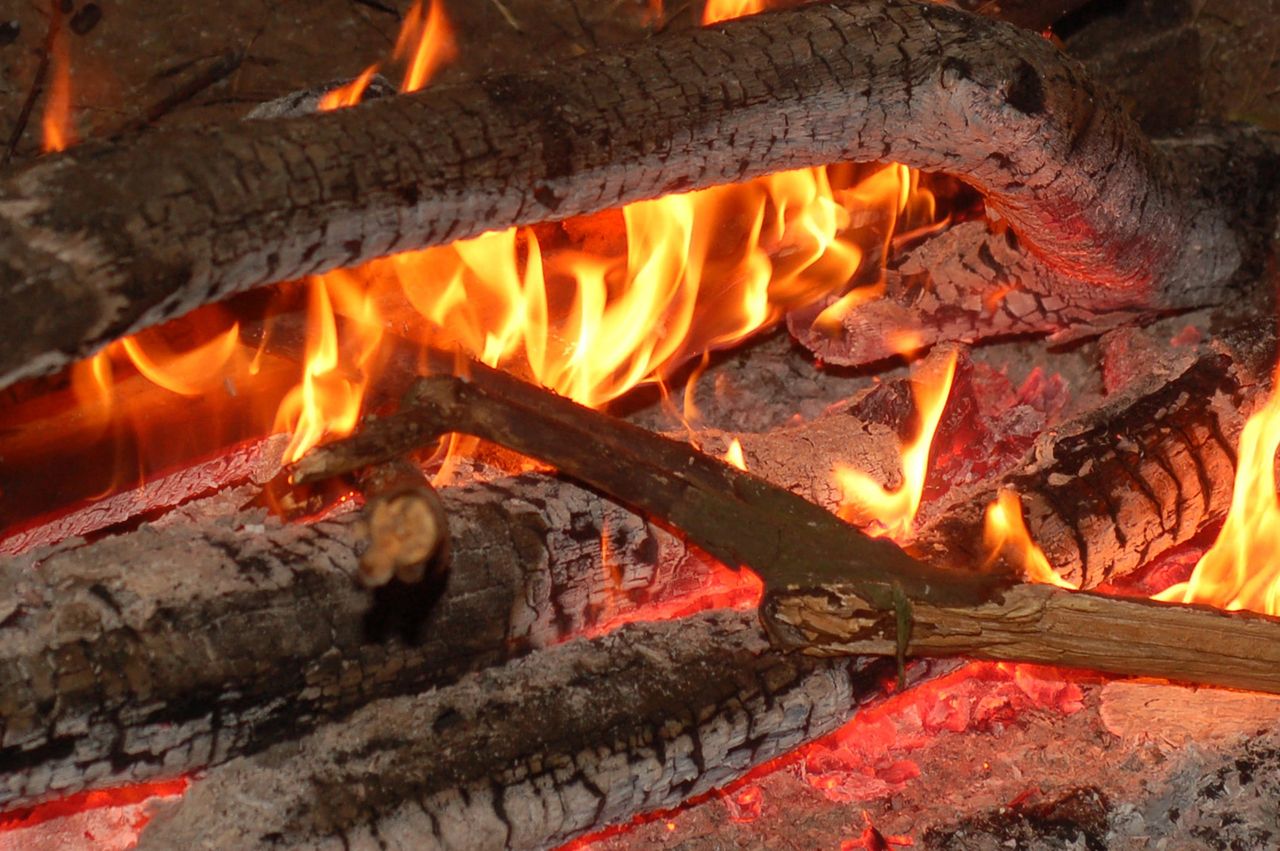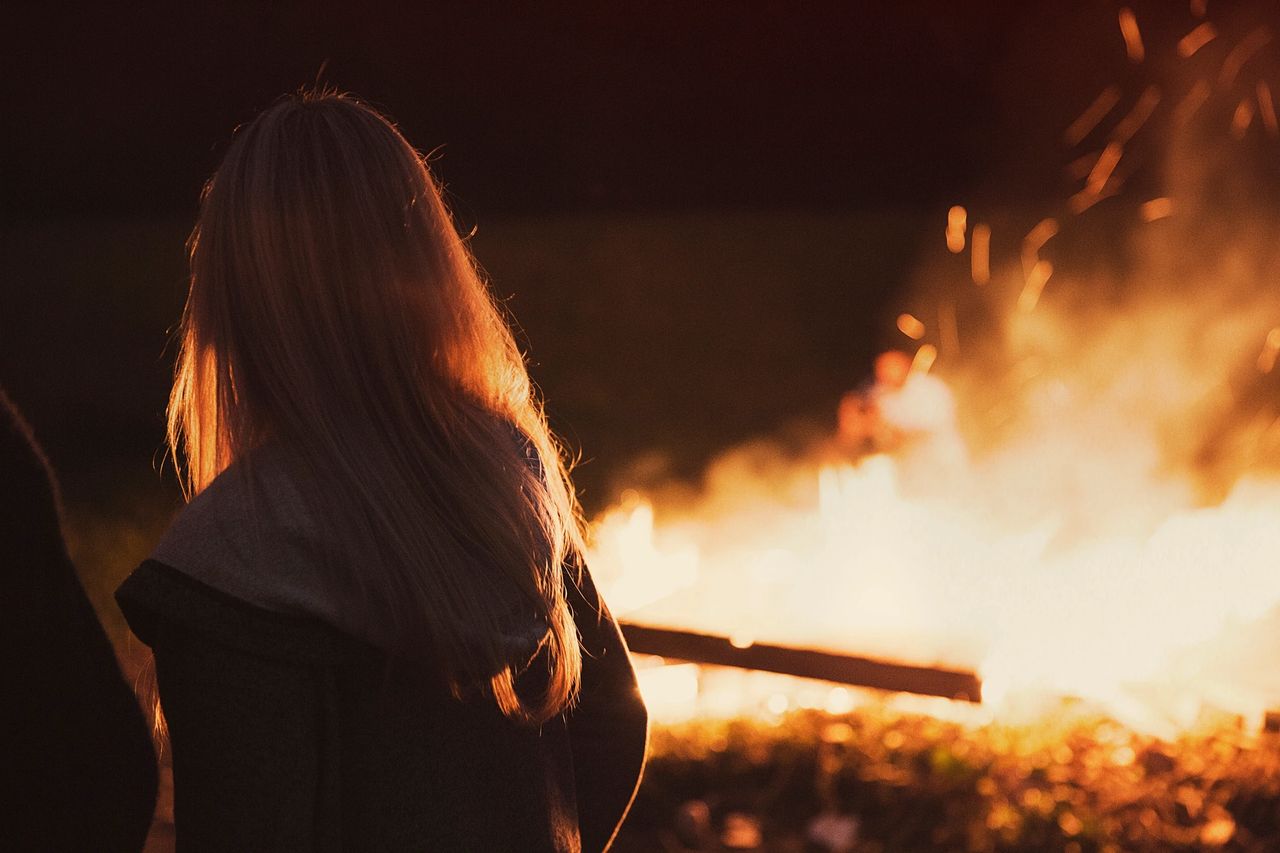Elizabeth Broadbent, Guest Blogger
My three kids, twelve-, ten-, and eight-years-old, stood around a campfire. My partner was cooking in our AirBnB kitchen. I was reading in our living room. “Oh, I didn’t know y’all started a fire,” I said from the couch.
“B [our oldest] started it,” he said. “I watched him do it, but he knows how. And I’m just glancing out the window once in a while. They know how to deal with it.”

I nodded and went back to my book. Presumably, my kids were hauling wood, feeding flames, and possibly roasting marshmallows. We didn’t worry that they’d burn themselves. We didn’t worry that they’d set the field on fire. Neither did we worry that they’d wander off and leave their campfire burning. While they were playing, they were playing responsibly.
This was normal for them. They know how to kindle, keep up, and douse a fire.
Luckily, we didn’t have neighbors.
We taught our kids how to handle fire from the time they were itty-bitty. When other parents were shrieking about touching matches, we kept ours far from toddler paws and instead sent our littles to gather firewood. Americans have an unreasonable terror of children and fire—our education focuses on Fire Prevention Week, smoke detectors, “Stop, drop, and roll,” and “Never play with matches!”. We drum it into their heads: Fire is bad. Fire is dangerous. Adults believe that kids and fire should never meet, except under tightly controlled, highly supervised activities.
But if they never encounter fire, how will they learn about it? How will they satisfy their natural curiosity? As Linda Åkeson McGurk writes in There’s No Such Thing As Bad Weather: A Scandinavian Mom’s Secrets for Raising Healthy, Resilient, and Confident Kids, “risk” and “hazard” are different words. We perceive fire as a hazard for children—and in certain situations, of course, it can be. But in general, fire is a risk: “Unfortunately, the term has a negative connotation,” she says. “We’ve come to think of risk as negative, but it’s not the same thing as hazard, and it’s important to make distinctions. Like with anything in life, if you want to learn how to judge risk, you actually have to engage in it.”
In other words, if you want your children to learn fire safety, don’t hide the matches. Teach them to handle fire safely. After one night’s campfire, my then-seven-year-old said, “I got to hold a burning twig and it was fun.”

I don’t remember how we taught our children how to use fire. It simply happened, like so many other things children learn about life. As teensy children, they were taught that fire would burn them. But they helped us cook food (not just the ubiquitous marshmallows). They scavenged for firewood. Eventually, they added their own wood to our fires. Finally, my Eagle Scout partner was patiently teaching, This is tinder, this is kindling, arrange them this way. Here’s how you strike a match.
Sara Zaske points out in The New York Times that this approach isn’t new. It’s one embraced by many European countries. Many countries actually teach fire safety, not fire prevention. One woman designed a program for preschoolers and kindergarteners that “teaches children how to burn things properly,” including “how to hold a match, use a lighter, light candles, and build small bonfires.” Fire safety. Not fire prevention.
These kids learn that fire is, like a sharp knife, a tool. It’s good in some situations and dangerous in others. My kids can build a campfire, but they aren’t setting one in the middle of our living room. They respect fire too much, and they’re responsible with it. Nor will you find my eight-year-old sitting in his bedroom and lighting match after match.
They know when fire moves from risk to hazard. Their natural curiosity about it is satisfied; it holds no forbidden mystery. This is what we wanted for our kids. More than, “Stop, drop, and roll,” we wanted them to grow up with a healthy respect for fire and its potential.
So yes: we let the kids lay the fire. We let them collect wood. Then we let them light the match, and we let them keep it going. If they want to make a fire, they only need to ask permission. I check on them, but I don’t hover.
They’ve got this.

Author Bio:
After earning numerous writing awards during her graduate program in fiction, Elizabeth Broadbent taught creative writing and wrote in the freelance (read: non-fiction) world, with pieces appearing in The Washington Post, Time Magazine, Insider, and The Huffington Post. During that time, she was a featured guest on CNN, NPR, and Canadian public radio. She was also a longtime Scary Mommy staff writer.
Eliza spends most of her time unschooling her three sons, all of whom have cool names and love David Bowie. When she isn’t writing, she’s kayaking or hiking. You can find her on Facebook, Instagram, and Twitter, or visit her website, which contains links to both her essays and young adult novels.
